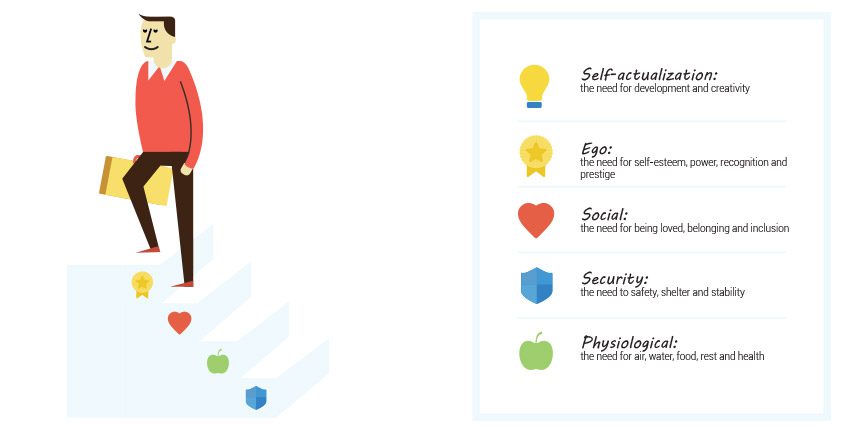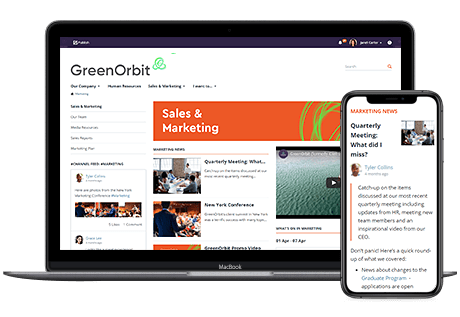
Search on the term ‘Employee Engagement’ and Google will serve up over 224 million results - a mind-boggling collection of strategies, statistics, trends and expert advice.
If you’re trying to get your head around the concept, it’s a lot to take in.
Maybe you’re even a little skeptical about the whole Employee Engagement thing – wondering if it’s a passing fad.
Or maybe you're on board with the idea but don’t know where to start.
The following lessons will lead you through the labyrinth, pointing out useful resources along the way.
Like the proverbial onion, ‘Employee Engagement’ has many layers.
The MacLeod Report provides a useful working definition:
“Employee engagement is a workplace approach designed to ensure that employees are committed to their organization’s goals and values, motivated to contribute to organizational success, and are able at the same time to enhance their own sense of well-being."
While this definition, from author Daniel Cable, captures the spirit in a single sentence:
"Encouraging people to bring their best selves to work."
If you want to up-the-ante on Employee Engagement in your organization, you’ll need to create a definition that suits your unique challenges and goals – think of it as an Employee Engagement mission statement.

Lesson 2. What Employee Engagement Is Not
To make sure you’re using the right terminology, it helps to understand how Employee Engagement differs from other closely-related concepts.
For example, it's more than Job Satisfaction which tends to be measure of how employees feel about ‘hygiene factors’ such as pay, hours and flexible working conditions.
It intersects with, but is separate from, Employee Experience – a fairly new approach that involves tracking the employee journey and creating an environment that encourages people to do their best work.
Also, most experts agree that Employee Engagement it is not about ping-pong tables, free muffins or dog-friendly offices (though I don’t see how these could hurt).#EmployeeEngagement is about more than ping-pong tables, free muffins or dog-friendly offices.Click To Tweet
Lesson 3. Why Employee Engagement is So Hot Right Now
Why has it taken us this long to realize that a highly motivated workforce is central to success?
It seems so obvious.
Somewhere along the line we lost sight of humans and decided to focus on Gantt charts, performance metrics and sales funnels instead. But the tide is well and truly turning.
Leaders are looking up from their spreadsheets and beginning to understand that people are at the centre of business success – both as customers and as employees.
Need evidence that Employee Engagement is trending?
Last year, the annual Employee Engagement Awards ceremony was held in London's Wembley Stadium (think Beyoncé and FA Cup). It sold out.
If you’re wondering whether your organization needs to get serious about Employee Engagement, here's a snapshot of the main drivers:
Lesson 4. Who is responsible for Employee Engagement?
Building an engaged workforce takes a lot of effort.
Whose job is it?
The prevailing consensus is that we are all responsible for Employee Engagement – everyone, from the CEO (Chief Engagement Officer!) to the customer service people on the ground. While this rings true, it takes strong leadership to build a workplace where Employee Engagement is the norm. Here are the main instigators and torchbearers:
Current thinking also suggests that we, as individuals, need to take responsibility for our own engagement – understanding what motivates and inspires us and taking the steps to make it happen.
Lesson 5. The Neuroscience of Employee Engagement
So, we are beginning to understand how and why Employee Engagement has captured the corporate imagination.
But how does Employee Engagement feel?
The psychology of human motivation is complex and widely studied – but it’s worth getting familiar with these leading theories.
Maslow’s Hierarchy of Needs
A theory of human motivation based on a pyramid of fundamental human needs:
In this scenario, basic needs must be met before employees can reach their full potential.

Flow
A state described by the psychologist Mihaly Csikszentmihalyi back in 1990.
“The best moments usually occur when a person’s body or mind is stretched to its limits in a voluntary effort to accomplish something difficult and worthwhile.”
Think about the last time you were truly engaged in an activity – work or otherwise.
A time when you were totally absorbed – in the zone. When time passed unnoticed and hunger pains went ignored. When your brain was firing on all cylinders and a clear goal was in sight.
Felt pretty good, didn’t it?
This kind of discretionary effort and intrinsic motivation is at the heart of Employee Engagement.
Drive (the surprising truth about what motivates us)
In his paradigm-shattering book, Daniel Pink ignited the discussion around Employee Engagement by suggesting that humans are not motivated by rewards like money.
Instead - based on decades of scientific research - Pink outlines the trifecta of human motivation:
The theories are great but how can individuals or organizations put them into practice?
The internet is awash with potential Employee Engagement strategies - here are the top 7:
According to Glassdoor, these were the top places to work in 2018. The employee reviews give great insight into what it takes to attract and retain engaged employees:
USA:
UK:
The price of a disengaged workforce can be high – it’s important to understand the risks:
What technologies are available to support Employee Engagement?
Online Surveys – these can be used to ‘take the pulse’ of employee sentiment at regular intervals or gather more in-depth feedback over time. You can create your own or choose from a wide range of off-the-shelf offerings like Culture Amp or TinyPulse.
Data Analysis Tools - often, companies do an annual survey and the results (particularly the free form answers) languish in a spreadsheet somewhere. These are the words used by your employees and it's vitally important to "listen" to what this data is telling you. Tools like Interpris can help you organize and make sense of this crucial feedback.
Performance Management Software - helps you to set employee goals, manage one-on-one meetings (aka performance reviews), and give real-time feedback. Again, there is swag of tools to choose from – crewmojo, Bridge Performance Management and Cognology just to name a few.
Digital Workspace solutions – these are Intranets or digital workspaces that bring your people, documents and conversations together in a centralized platform. You can choose from a full-blown customizable solution like SharePoint or with an offering like GreenOrbit with everything you need, built in.
Lesson 10. Follow the influencers
Use Twitter to keep track of the latest thinking around #EmployeeEngagement.
Here are a few of the top influencers to get you started:




Also, you can learn a lot from these Twitter #hashtags
#FoW or #futureofwork
#hrtech
#worktrends
#organizationalculture
#workplaceculture
#hrtransformation
#measureyourculture
The concept of Employee Engagement, as workplace approach and cultural revolution, is evolving as we speak.
Hopefully, this crash course gives you a firm foundation for further exploration and inspires you to learn more.
What's your take on Employee Engagement?
Where are you in the journey to workplace enlightenment?
Any articles, tools or influencers you would add to the mix?
Drop us a line in the comments below.
